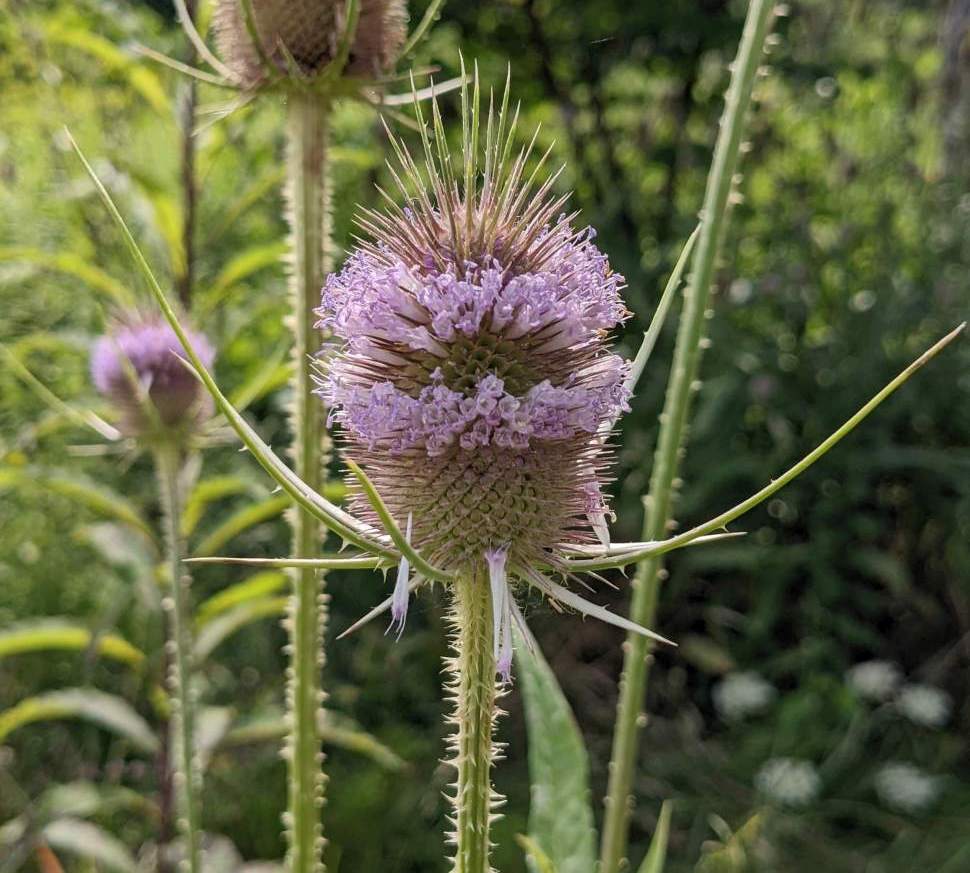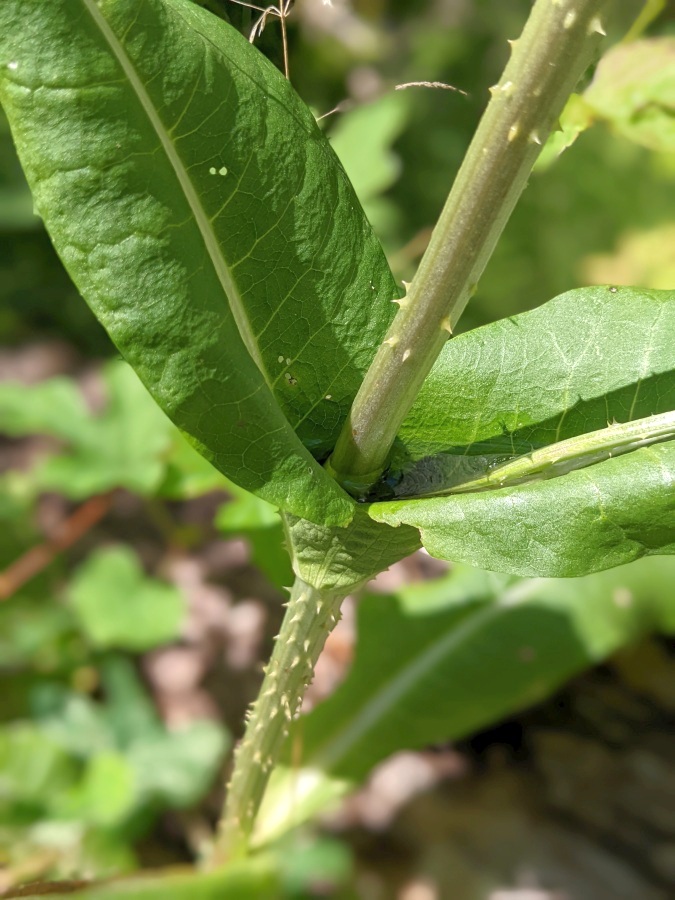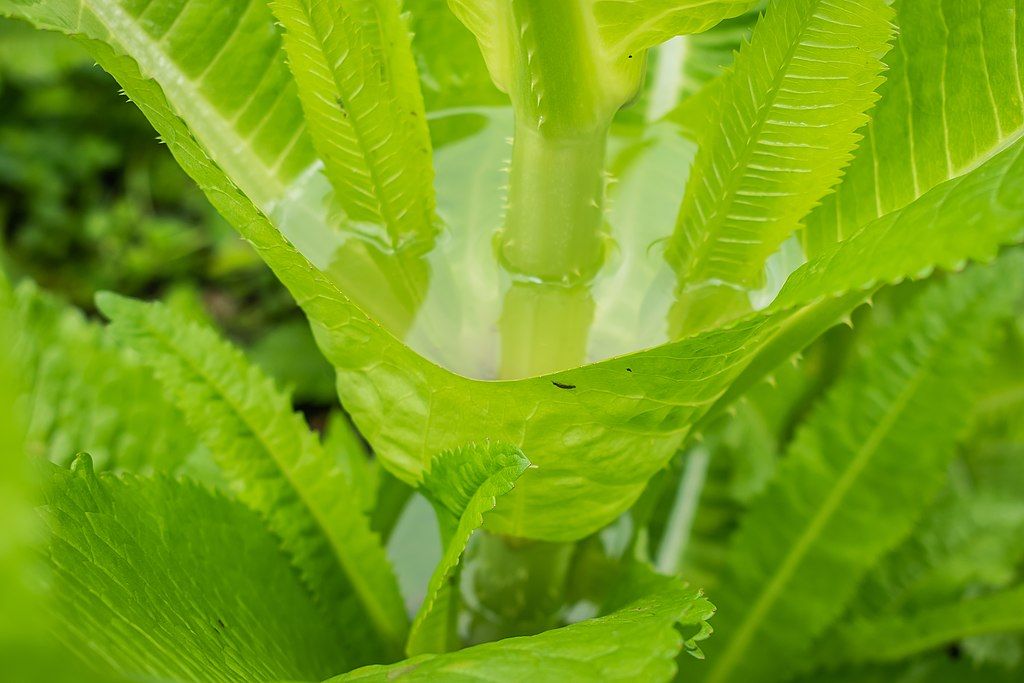
2 August 2022
This flower head is so spiny and eye catching that we rarely look at the leaves though they’ve been studied intensely at least three times since the 1870s.
Teasel’s (Dipsacus fullonum) paired perfoliate leaves collect rainwater in the cup where they clasp the stem and unwary insects drown in the puddle. Notice the water in the leaf cups below. (Click the first photo to see a marked-up version showing the water line.)


In the mid 1870s Francis Darwin, son of Charles Darwin, hypothesized that teasel digests the decaying insects, then studied and published about the digestive mechanism. Not everyone was convinced. Teasels were studied again and again.
A 2011 study published in PLOS ONE found that teasels with dead insects in the leaf cups set more seed than those without, thus a nutrient benefit of carnivory. But a 2019 study in Canadian Science Publishing found that seed production had more to do with soil nutrients.
Teasels obviously use spines to defend themselves, but do they play offense, too? Are they carnivorous? It would be nice to think so but we don’t know.
Read more in this 2017 article In Defense of Plants, published before the 2019 study.
(photos by Kate St. John and from Wikimedia Commons)